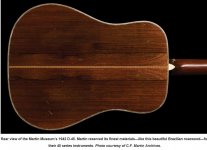If I had the opinion that the entire butt had to be the same wood to achieve a "purity of hit", I might call someone's maple forearm and rosewood handle cue a "Fraken-cue". Except I wouldn't...that might sound rather disrespectful. I believe a maple forearm cored with rosewood cue is no more a "Fraken-cue" than a maple forearm and rosewood handled cue.
All full-splice cues are Franken-cues then.
Heaven forbid if they have sycamore veneers .
Heaven forbid someone cores BRW with BRW.
There are some boards that are just too ugly but can be sawed and cross-laminated. Works for good coring dowel to me.

